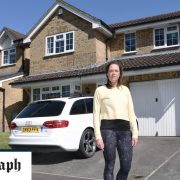Kate Owen is less than a decade away from wanting to retire. Her dream is to buy a house in Europe and travel the world once she stops working. But with lofty ambitions for an annual income and the need to stump up cash for another property purchase, will her savings and buy-to-let portfolio suffice?
Ms Owen, whose name has been changed, is 53 and plans to retire in her early 60s. The holiday home could cost up to £300,000 and she will need a £30,000 income for her and her partner’s everyday and travel expenses.
“We have been spending time in various European destinations in the past couple of years trying to work out where we may want to settle for longer winter periods," Ms Owen said.
Luckily, Ms Owen has the assets to support her aims. Along with her partner, she owns eight properties in the north of England which generate annual rental income of £35,000 and are worth £520,000.
Ms Owen also has a self-managed pension worth £350,000 – invested in a spread of active and passive stock and bond funds – and a workplace pension that will pay £3,000 a year from age 65. There is £82,000 in cash spread across savings and her consultancy business.
She takes £32,500 a year out of the business in wages and dividends and has contributed £40,000 a year into a workplace pension. Work is quieter at the moment and further savings may be limited.
Ms Owen is eligible for the full state pension as is her partner. The mortgage on their home is £108,000 which the couple want to pay off by the time they retire.
Thus far, Ms Owen has invested in stocks and shares and embraced the concept that taking more risk brings higher rewards. However, as she approaches retirement she wants to move her portfolio into "safer" investments that focus on generating an income rather than returns.
Kate Owen pension holdings
Ricky Chan, of financial adviser IFS Wealth & Pensions, said:
In short, Ms Owen and her partner are going to be just fine.
There is a fairly large gap between 60 and 67 (when the state pension starts) when they would be dependent on income from properties and pensions. After this, their retirement income would be met in full through a combination of state pensions, rental incomes and Ms Owen’s company pension.
A combination of overpayments with company dividends and the cash will be enough to pay off the mortgage by the time Ms Owen turns 60, and she should do this. This ensures the main home is mortgage free and servicing the interest does not become a drag.
To release funds to buy a Spanish home she could start a staggered sale of her rental properties. Start with ones that offer the lowest yields or require the most attention. Selling half the portfolio could release some £260,000 and a staggered sale over several years would mean she could take advantage of the capital gains tax allowance – as any profit on the properties would be liable for CGT.
Any extra money needed to buy the holiday home could come from withdrawing 25pc of her pension as cash. This would be tax free under the current rules and could provide more than £100,000 by then.
However, selling half the rental portfolio would reduce rental income which will be a problem as the couple still need to plug the income gap until they reach state pension age. Between retiring and turning 67, no income from work and halved rental income will create a gap of £17,500 if they want £30,000 a year. This would reduce slightly at 65 when Ms Owen’s old company pension worth £3,000 kicks in.
To bridge this, the couple could draw a combination of the tax-free lump sum cash and “taxable income” from the pension pot – this can be done via flexi-access drawdown and this will be tax efficient.
The state pension – which will provide £17,000 a year in today’s money – would effectively fill much of the shortfall. So from 67 they would have enough income to meet their £30,000 a year. They may not even need to dip into the pension pot unless there were rental vacancies or an increased need for income or big ticket costs such as home refurbishments.
Would you like a Telegraph Money Makeover?
Neil Moles, of financial adviser Progeny, said:
The bulk of Ms Owen’s assets are in property – which is illiquid – so she needs to be mindful that she does not have ready access to a lot of cash until she turns 55 and can access her pension savings.
She should reduce her salary slightly and increase her dividends to give the same amount of income as this would create a small tax saving by reducing the national insurance she pays both personally and as an employer, while still retaining her entitlement to the state pension.
Retaining her properties during retirement would give her a starting level of income but she should be mindful that this is not guaranteed as it relies on the continuity of tenants.
If Ms Owen keeps her properties for income, then she could use her pension to provide any additional income she needs on top of the state pension. She could use income drawdown as this would allow her to take a combination of tax-free and taxable income.
However, the pension portfolio appears to be quite high-risk. Reviewing her "attitude to risk" and knowing how much she could withstand losing if markets fell is important.
The pension is one of her larger, more accessible pots of money and making sure it is invested in the right funds and assets, in a good cost-efficient way is vital. She should regularly check and analyse her investments to make sure they are fit for purpose.
























Comments